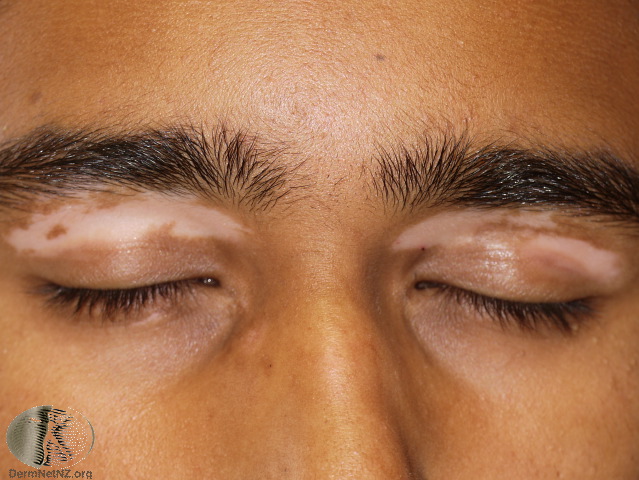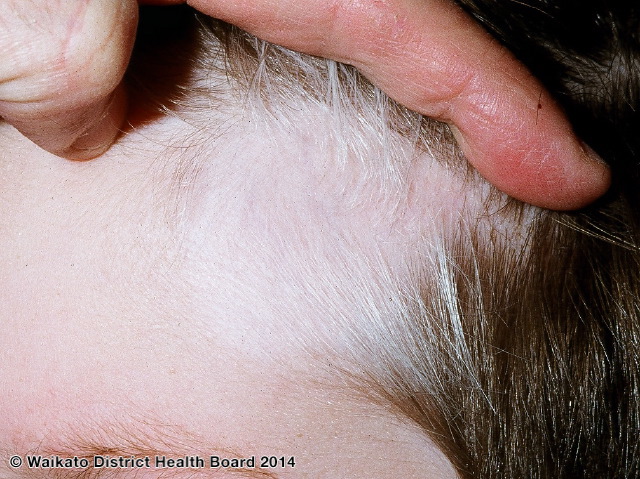Vitiligo
Dr. Keith A. Knoell
Serving Waynesboro, Staunton, Lexington and Harrisonburg, VA

Vitiligo is a frustrating disease that causes skin to lose its color, appearing differently from person to person. Some people develop a few vitiligo white patches on their body, and others develop multiple patches. It can show up anywhere on the body that has pigment.
The Cause of Vitiligo
There is no known cause for vitiligo. However, there are several schools of thought regarding the disease. Some scientists think it may be an autoimmune disease because it appears to attack the immune system, destroying melanocytes in the skin.
Other scientists think the melanocytes actually destroy themselves. Still others believe that a single event such as an emotional trigger or sunburn can cause the disease. Bottom line, vitiligo is a mystery that we’re working to solve.
Those Most Likely to Develop Vitiligo
Vitiligo is an equal opportunity disease, affecting all races and both sexes. It can occur as early as a person’s twenties, but has been known to develop at any age. We do know that those with hyperthyroidism are more likely to get vitiligo than those that don’t have an autoimmune disease.
Interestingly, most people with vitiligo have no other autoimmune disease. It also seems to run in families.
Symptoms of Vitiligo
The main sign of this mysterious disease is white patches on the skin. They generally form on areas that experience sun exposure such as hands, feet, arms, face, and lips.
Other areas where vitiligo forms are:
- Armpits and groin
- Around the mouth
- Eyes
- Nose
- Navel
- Genitals
- Rectal area
Those with dark skin may notice that the skin inside their mouth loses color. Another characteristic of vitiligo is that hair often grays earlier.
photo courtesy of dermnetnz.org

Vitiligo is not contagious.

Vitiligo White Patches
Patients often ask, “Will it spread?” There is simply no way to know. For some, yes, but for others, no. Vitiligo can very slowly spread over the course of many years, or it can spread rapidly. Some patients report that vitiligo spreads after an emotional or physical stress.
How It Is Diagnosed
Dr. Knoell will ask you questions about your family and your medical history. He will also perform a physical exam and run tests to determine a diagnosis of vitiligo.
Treatment of Vitiligo
Most treatments are designed to restore an even color to the skin by treating the white patches. However, treatment depends on the number of white patches you have, how widespread they are, and your personal preference for treatment.
You should know that many vitiligo treatments have side effects. Further, the treatments can take a long time to work, and sometimes they don’t work at all.
Some treatment options are:
- Topical creams
- Oral medications
- Ultraviolet light
- Removing color from surrounding areas to match the white patches
photo courtesy of dermnetnz.org
Other treatment options are:
- Sunscreen—a must!
- Makeup to cover the white patches
- Counseling
How People Cope with Vitiligo
The most important way to cope with vitiligo is to find a local dermatologist who knows how to treat it. Dr. Knoell has been practicing dermatology for over 17 years, and has a great deal of experience treating this disease. He’s also a good listener!
Additionally, talk with others that have vitiligo. If you can, find a vitiligo support group. Turn to your family and friends for support.
Learn about the disorder and your treatment options. But most importantly, be gentle with yourself.
photo courtesy of dermnetnz.org

What’s the Current Research on Vitiligo?
Gene research is helping us gain a better understanding of vitiligo. The most recent research includes studies that investigate:
- The effect of trauma or stress on the development of new white patches
- New treatments and new understandings of vitiligo using a mouse model
- Genes that possibly contribute or even cause vitiligo
- Analysis of genes that are known to be linked to the disease
If you have vitiligo or suspect that you do, please call the office of Dr. Keith Knoell, Valley Dermatology, for an appointment! 540-221-6702